The best bits 2
First I want to look back to Newsletter 102 (December 2012). There I was talking about the motorcycle that is shown on the stamp of Guatemala. I presumed that it concerns a transversal V-engine.
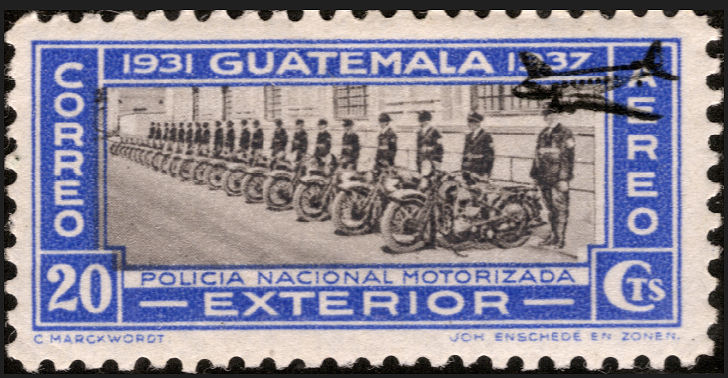
The stamp of Guatemala
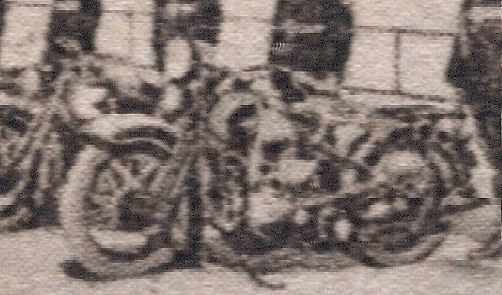
Detail of one of the motorcycles
Henk Janse, our club member from The Hague and Harley connoisseur, sent us a message that it is really a Harley Davidson. He says it is a 74 ci (1200 cc) model, which can be concluded from the fact that the driving chain is located on the left (see the chain guard), and more precisely the model VLD. The last conclusion is based on the tank emblem (Flying Diamonds), which was different every year and this emblem is from 1934.
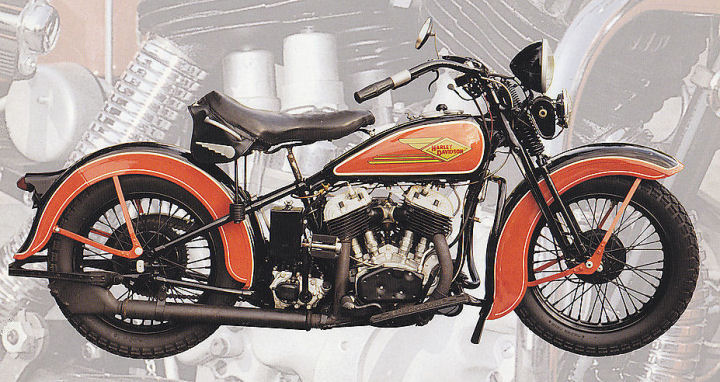
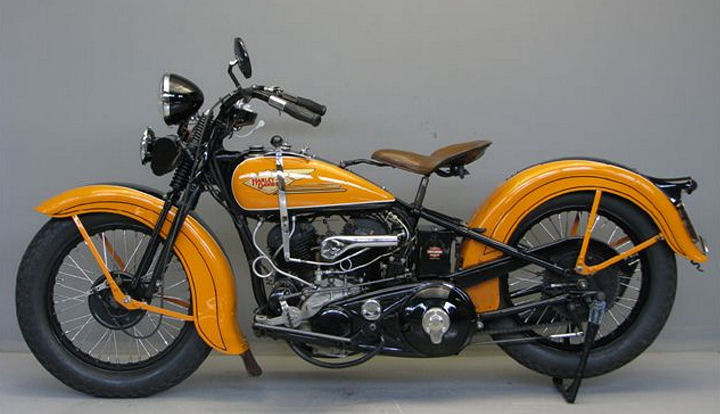
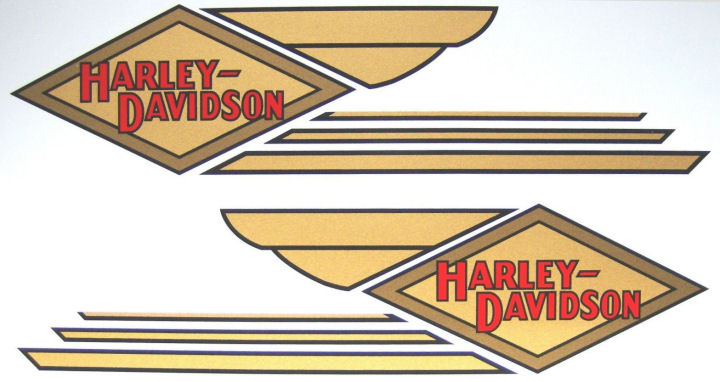
I have erroneously taken the air filter for a sloping transversal cilinder, but Henk's explanation has convinced me. A Harley thus.
The Burgos imprint. As promised some more information about this nice stamp, used by the Francists during the Spanish Civil War from 1936-1939. The official name of the stamps is: Emisiones Locales Patrioticas de Burgos.
The stamp that is interesting for us is printed on a tax stamp with the text: Para Efectos de Comercio, Clase 13A, with a value of 20 Centimos.
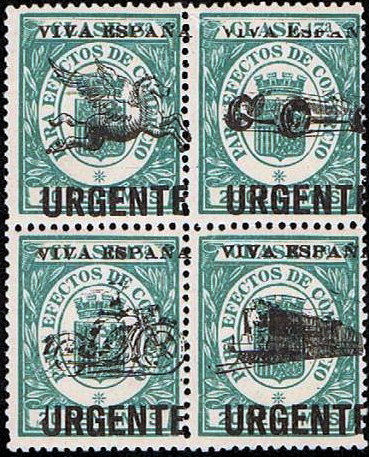
How did this imprint originate? During the Spanish Civil War (July 17th 1937 til April 1st 1939) the Francists (named after Franco) or Nationalists were urged to reside in the North Eastern part of the country in the Bask provinces, with Burgos as most important city. Therefor the Francists' governement was located there. The supply of the royalist cities in the North that where almost completely enclosed was done over sea by armed coasters, the so-called blockade runners.
One of these freight ships
was the Galdames. The ship from 1918 had been transformed in 1937 to blockade runner, and sailed in 1938 to Bilbao together with 4 fishing trawlers that were converted into marine ships. At May 5th they sailed into the trap of the Nationalists battleship the 'Canarias', and were conquered by the Nationalists.
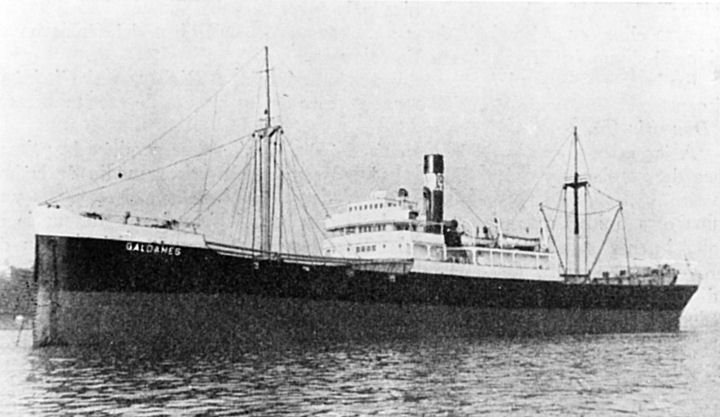
Blockade runner "The Galdames"

Battleship "The Canarias"
The Galdames was loaded with, amongst others, 3 tons of nickel coins from Belgium and a large amount of tax stamps. As the Nationalists where short on almost everything, thus also on stamps, the tax stamps were used as postal stamps in the already 'liberated' areas.
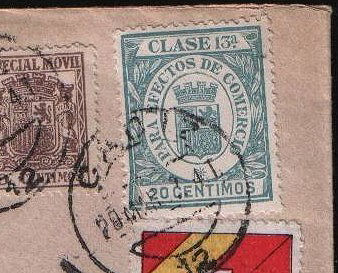
Example of a tax stamp used as postal stamp
|
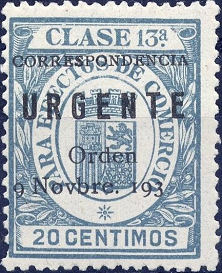
A tax stamp with imprint
|
First they were used without imprint, but later we see different imprints. When the battle is coming to its end the blocks that are important for us appear. The sheets tax stamps were manually imprinted in blocks of 4 with images of respectively Pegasus (the flying horse, born from the blood of Medusa), a racing car, a steam train and in the lower left corner a postman on a motorcycle, with underneath each image the text 'URGENTE'.
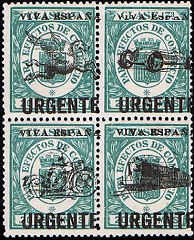
The complete block with 4 imprints
|
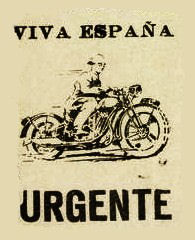
The imprint with the motorcycle driver
|
In fact the set came too late to be of any use, as they appeared just after the war was won and thus the normal stamps could be used again for express post. This makes used envelops with the Burgos imprints very rare. The imprints exist in 2 colors: black and red. I have heard the rumour that the red imprints have been placed in Madrid (thus after the victory) but another story tells that the red imprints had an 'Official' status, thus used for mail from the governement.
In 'De Philatelist' (predecessor of the Dutch magazine 'Filatelie') from 1939 mr. Karel J. Heymans has a column in which he kept track of the developments in Spain. He announced that by a decree of September 11th 1936 by F. Davila, chairman of the Finance Board, the black imprints where used to send mail within the area of Burgos (North-East Spain) and the red imprints for mail to also 'liberated' cities outside this region.
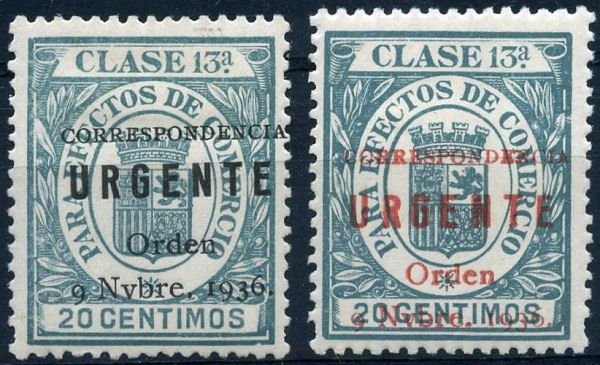
The stamps are mainly offered by the trade in blocks of 4 (whenever they are offered) and sometimes as loose stamps. The estimated edition is around 500 sets, thus also only 500 motorcycle stamps. For loose motorcycle stamps (together with the train stamp the most expensive of the set) 50 euro is easily paid and for blocks 80-120 euro. In the 30 years that I walk around fairs and shops as collector, I have seen a Burgos train stamp used on a letter only once. A real 'best bit' thus.
Hans de Kloet
Top - Back to former page - Home |












